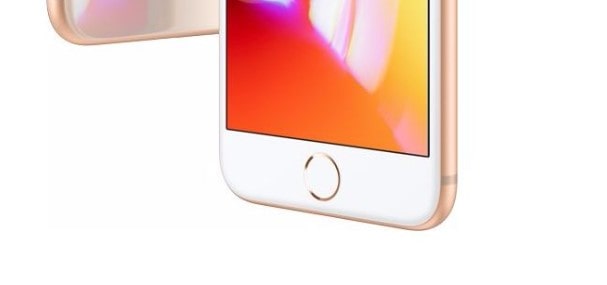Over the years, the iPhone has seen a shift in design, moving away from physical buttons to a more sleek, buttonless facade. A significant change came when Apple phased out the physical home button, a feature once synonymous with the iPhone’s design. The iPhone 8 and its larger counterpart, the iPhone 8 Plus, released in 2017, were the last models to include a clickable home button. Fans of the tactile feedback provided by a physical button can still experience it by purchasing older models like the iPhone 8 or opting for the iPhone SE.
The iPhone SE maintains the classic design with modern updates. This budget-friendly smartphone sports a 4.7-inch display and keeps the home button with Touch ID, offering familiarity and security. Under the hood, it boasts the A15 Bionic chip and support for 5G, ensuring that users can enjoy current technology trends while keeping the traditional user interface.
The transition from physical home buttons to alternative authentication methods like Face ID reflects Apple’s commitment to evolution and innovation. Users who prefer the classic design with the home button still have options, such as the iPhone SE, which offers up-to-date tech in a familiar package.
A Look At The Last iPhone with a Home Button
The iconic Home button was a defining feature of the iPhone for over a decade, providing users with a tactile way to navigate their devices. However, Apple eventually phased it out in favor of gesture-based navigation and Face ID. Here’s a look at the last iPhone model to feature the physical Home button and what made it special.
The Last iPhone with a Physical Home Button: iPhone 8 and iPhone 8 Plus
- Release Date: September 2017
- Design: Retained the classic design with a physical, clickable Home button integrated with Touch ID fingerprint sensor.
- Display: 4.7-inch Retina HD (iPhone 8) and 5.5-inch Retina HD (iPhone 8 Plus).
- Performance: Powered by the A11 Bionic chip, offering significant speed and efficiency improvements.
- Camera: Improved camera systems with Portrait Lighting on the Plus model.
- Wireless Charging: Introduced Qi wireless charging support.
- Durability: Glass back design for wireless charging and enhanced durability.
Why the Home Button Was Important
- Touch ID: The Home button housed the fingerprint sensor, enabling secure and quick device unlocking and authentication.
- Navigation: It provided a simple, physical way to return to the home screen, activate Siri, and multitask.
- User Familiarity: Many users appreciated the tactile feedback and ease of use.
Transition Away from the Home Button
- Starting with the iPhone X in 2017, Apple removed the physical Home button to maximize screen size and introduced Face ID facial recognition.
- Gesture-based navigation replaced the Home button functions.
- The iPhone SE (3rd generation, 2022) is the most recent iPhone to retain the Home button, combining modern internals with the classic design.
Legacy and User Sentiment
- Many users miss the Home button for its simplicity and reliability.
- Apple offers on-screen alternatives like AssistiveTouch for users who prefer a virtual Home button.
- The Home button era marked a significant chapter in iPhone history, blending hardware and software innovation.
Key Takeaways
- The iPhone 8 series were the last models with a physical home button.
- The iPhone SE offers a traditional design with updated technology.
- Apple’s design evolution represents a balance of innovation and user preference.
Evolution of the iPhone Design
The evolution of the iPhone’s design has been marked by significant changes from its introduction to the last model featuring a home button. This section details the key elements of this transformation.
Introduction of the Home Button
Apple introduced the original iPhone with a notable feature, the physical home button. This became an iconic aspect of iPhone design, offering users a simple way to interact with their device. The first iPhone SE, following the size and design sensibility of the iPhone 5, continued the use of the physical home button.
Shift from Home Button to Gesture-Based Navigation
Apple started to phase out the home button with the launch of the iPhone X in 2017, making way for gesture-based navigation. This shift to a touch and swipe interface allowed for a larger screen area and the introduction of Face ID. Models like the iPhone XR and iPhone 8 were among the last to include the traditional home button.
Physical Attributes and the Last Models with Home Buttons
The iPhone 8 had a 4.7-inch display and measured 138.4 x 67.3 x 7.3 mm. It was one of the last smartphones to feature Apple’s A11 Bionic chip and a glass back design. Meanwhile, the iPhone SE (2020) was the final model to have the classic home button design combined with the A15 Bionic chip used in later iPhone 12 and iPhone 13 models. The iPhone 12 mini and iPhone 13 mini offered compact designs but with the modern, home-button-free aesthetic that includes minimized bezels and the Face ID notch.
Technical Specifications and Features
The latest iPhones boast significant advancements in camera and performance technology. These devices integrate powerful chips and improved batteries, alongside camera systems designed for near-professional photo quality.
Camera Evolution in iPhones
The A15 Bionic chip brings new features to the iPhone camera system. It powers functions like Smart HDR 4, Photographic Styles, and Deep Fusion. The chip enhances photos taken in low light. The rear camera has seen improvements as well, with better aperture settings that contribute to sharper images. Together, these technologies allow users to capture vivid and detailed photos across various lighting conditions.
Performance: Processors and Battery Life
iPhones with the A15 Bionic chip deliver fast performance. This chip supports iOS 15 and many modern features. Siri and augmented reality apps work more efficiently. The A15 chip also helps iPhones connect to 5G networks. This makes browsing and downloading faster than before. iPhones now offer better battery life. Wireless charging and fast-charge capabilities are available in newer models, such as the iPhone SE. With IP67 ratings, the devices become more resistant to water and dust, extending their usability and life.







